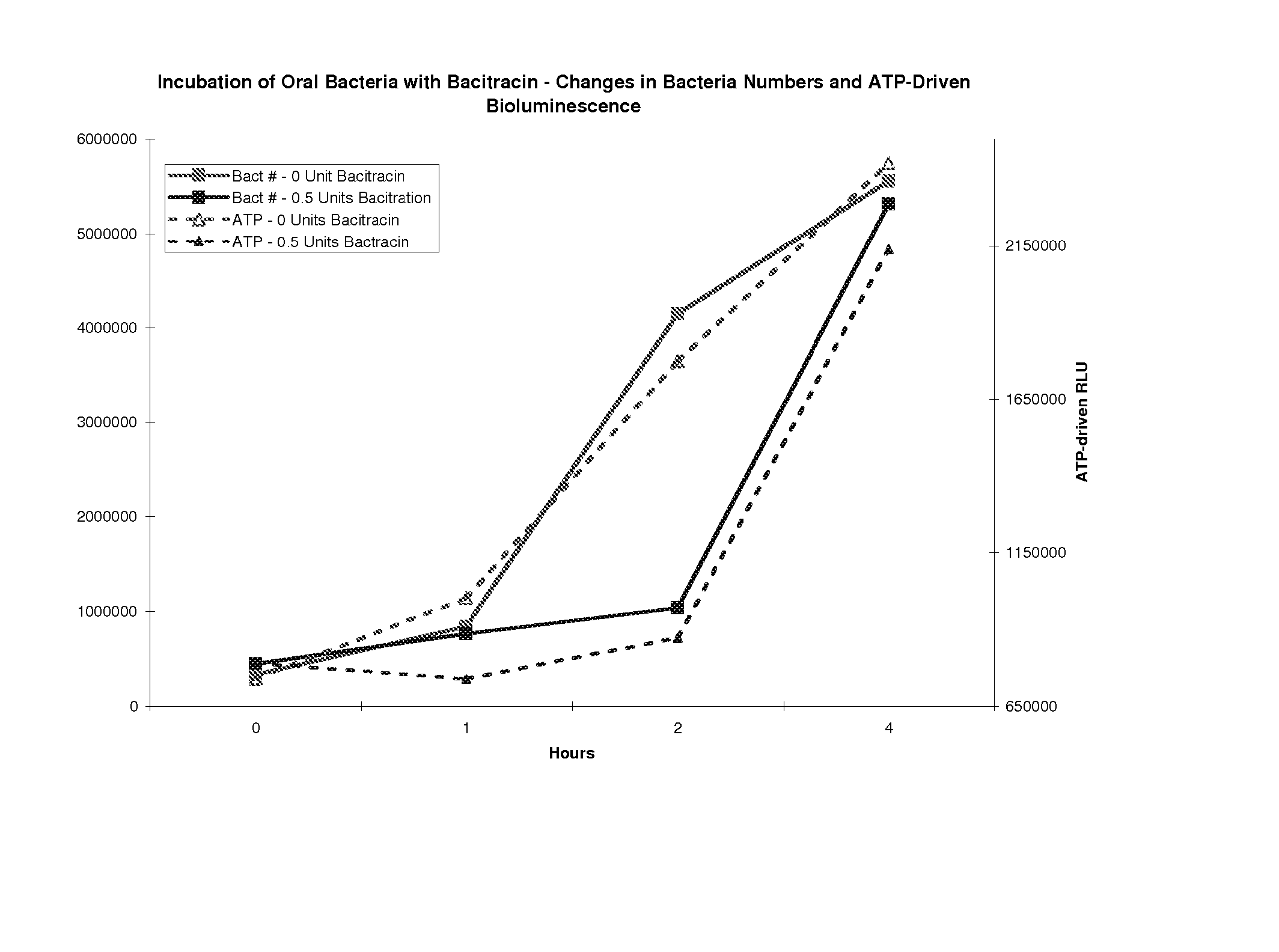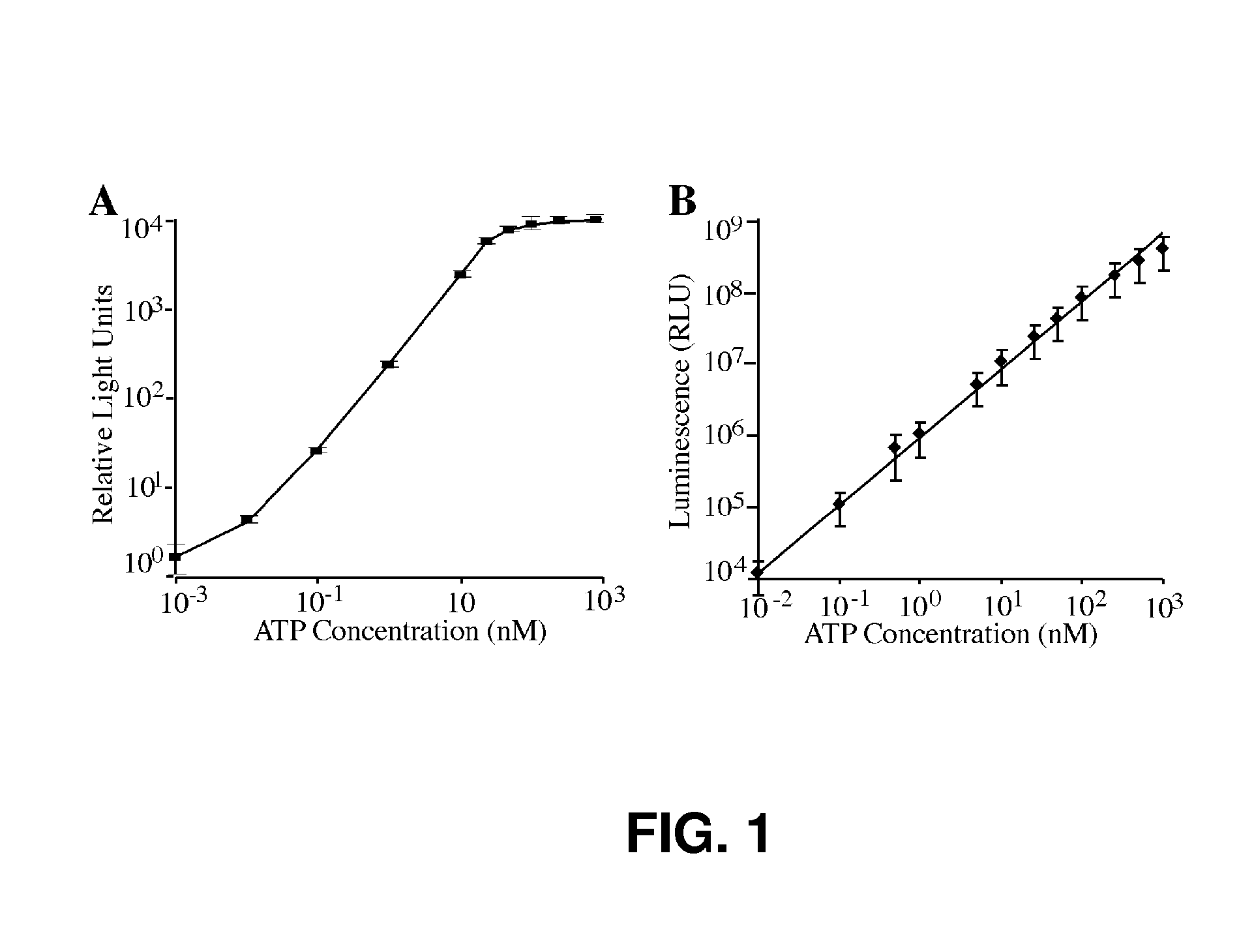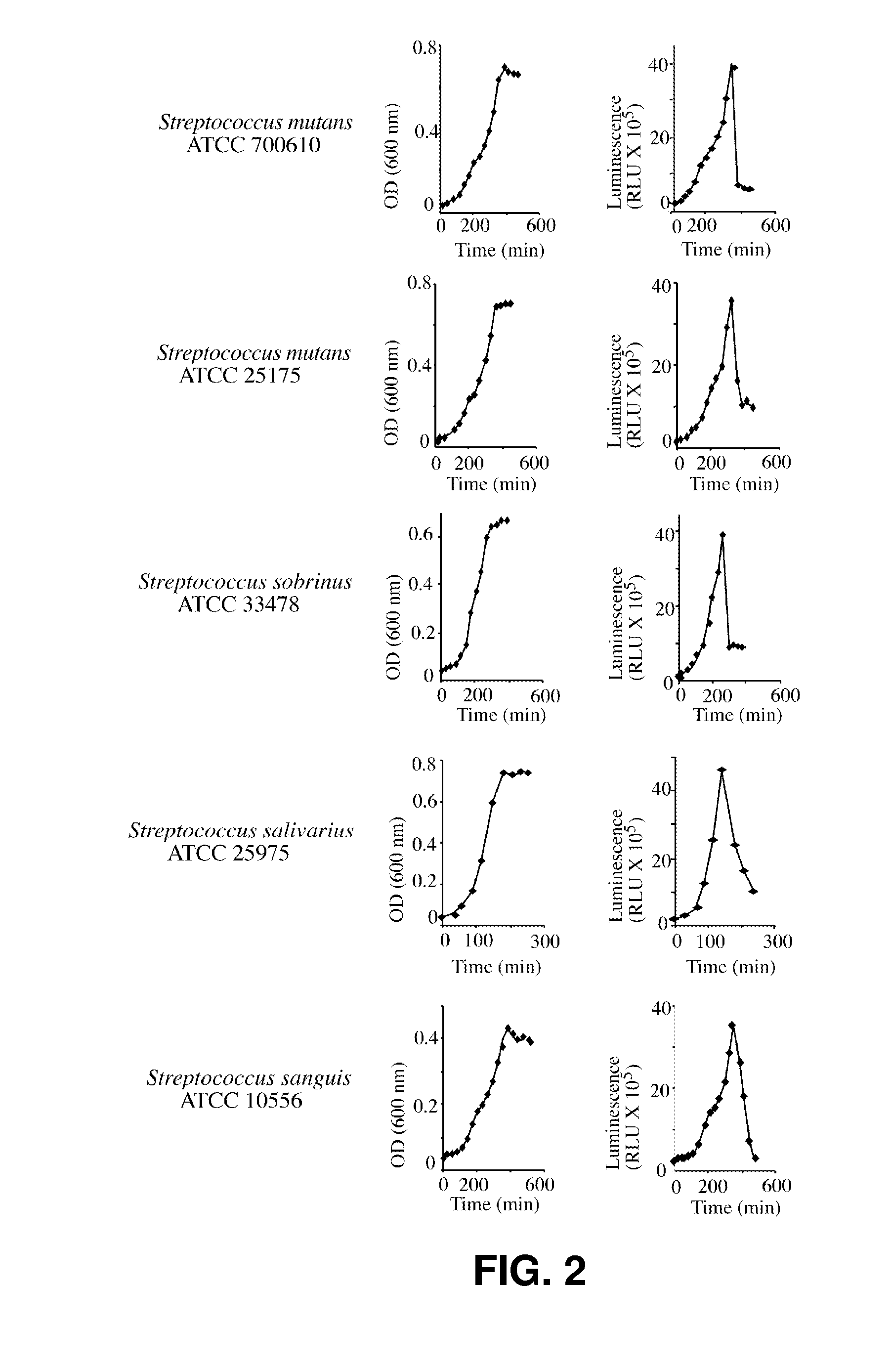Systems, kits, and methods for detecting cariogenic bacteria and assessing risk of dental caries
a cariogenic bacteria and cariogenic technology, applied in the field of dental care, can solve the problems of limited utility of tests, inability to grow, and inability of cariogenic system to specifically quantify the amount of highly cariogenic bacteria in a heterogenous microbial population, so as to promote the growth of caries-associated species, and increase the growth rate of cariogenic bacteria
- Summary
- Abstract
- Description
- Claims
- Application Information
AI Technical Summary
Benefits of technology
Problems solved by technology
Method used
Image
Examples
example 1
Test Microorganisms
[0053] This Example describes additional suitable organisms for detection and quantitation using the systems, kits, and methods described herein. Selected microbiological agents are acquired from multiple sources for use in an exemplary ATP bioluminescence test. These sources include the ATCC stocks disclosed in Table 2:
TABLE 2Exemplary Cariogenic Streptococcus and Lactobacillus Test OrganismsAvailable from the ATCCATCC ®NumberDescription / Designation / Select31989Streptococcus mutans Clarke UAB30819641Streptococcus sp. HS-419643Streptococcus sp. HS-719644Streptococcus sp. HS-1019645Streptococcus ratti FA-1 [CNCTC 10 / 89]25975Streptococcus salivarius27006Streptococcus sp. SS227351Streptococcus sobrinus deposited asStreptococcus mutans Clarke NIDR 6715-727607Streptococcus sobrinus deposited asStreptococcus mutans Clarke SL-131412Streptococcus intermedius Si-133478Streptococcus sobrinus SL1 [CCM 6070; CNCTC 9 / 89]35911Streptococcus macacae NCTC 1155849125Streptococcus...
example 2
[0054] This example describes the determination of doubling rate, lag time, initiation of stationary phase, and determination of growth levels at saturation for several oral streptococci and lactobacilli. In all cases, the source of inoculum was from an overnight culture dispensed into 75 ml of BHI medium and grown at 37° C. in a shaker incubator in the presence of supplemental 5% CO2. The results are recorded in Table 3.
TABLE 3Doubling rate, lag time, initiation of stationary phase, and determination ofgrowth levels at saturation for several oral streptococci and lactobacilliStationaryPhaseDoublingLag Period(initiationOD SaturationRate(duration inpoint in(AbsorbanceSpecies(minutes)minutes)minutes)at 600 nm)S. mutans961203900.675700610S. mutans891203900.685700610S. mutans71.81203600.71525175S. mutans77.21203600.70225175S. sanguis99.31203900.425S. sanguis95.71203900.43S. gordonii672403900.182S. gordonii572703900.197S. salivarius30601800.74S. salivarius30601800.729S. sobrinus57.3120...
example 3
A System for Assaying Microorganisms Associated with Dental Caries Formation
[0055] This example describes a system and method Microorganisms are collected from an oral sample using a sterile swab which is subsequently inserted into the bottom of a plastic tube. The tube is molded with an upper reservoir holding a cell-lysis solution and containing luciferin, luciferase and Mg+2. A plastic seal is broken allowing the solution in the upper reservoir to drain into the bottom of the plastic tube and to contact the swab in the bottom of the plastic tube. Microorganisms from the swab and the luciferin-containing solution are gently mixed for 20 seconds. The quantity of visible light released from the luciferin reaction, driven by the ATP originating from the collected microorganisms, is then measured using a hand-held luminometer. Reagents for measuring ATP are via the luciferin luciferase assay are available, for example, from BioThema AB, Stationsvägen, Sweden.
PUM
| Property | Measurement | Unit |
|---|---|---|
| time | aaaaa | aaaaa |
| time | aaaaa | aaaaa |
| incubation time | aaaaa | aaaaa |
Abstract
Description
Claims
Application Information
 Login to View More
Login to View More - R&D
- Intellectual Property
- Life Sciences
- Materials
- Tech Scout
- Unparalleled Data Quality
- Higher Quality Content
- 60% Fewer Hallucinations
Browse by: Latest US Patents, China's latest patents, Technical Efficacy Thesaurus, Application Domain, Technology Topic, Popular Technical Reports.
© 2025 PatSnap. All rights reserved.Legal|Privacy policy|Modern Slavery Act Transparency Statement|Sitemap|About US| Contact US: help@patsnap.com



